How does one calculate the input impedance of a differential amplifier?
Since the input impedance of an op-amp is very high, the input impedance for V2 should be R2 + Rg. But what would be the input impedance for V1?
How does one calculate the input impedance of a differential amplifier?
Since the input impedance of an op-amp is very high, the input impedance for V2 should be R2 + Rg. But what would be the input impedance for V1?
Differential input impedance is the ratio between the change in voltage between V1 and V2 to the change in current.
When the op-amp working, the voltages at the inverting and non-inverting inputs are driven to be the same. The differential input impedance is thus R1 + R2.
If the op-amp was 'railed' (saturated) then the differential input impedance would be higher: R2 + Rg + R1 + Rf.
Here is a circuit that can be simulated, based on the above definition of differential input impedance (values picked to be different). The input current is 333.3uA = 1V/3K.

simulate this circuit – Schematic created using CircuitLab
Edit: To summarize the discussion with Dave Tweed below in comments, there are three impedances we can calculate.
The differential input impedance is R1 + R2 as stated above.
The input impedance looking in from V2 is R2 + Rg.
The input impedance looking in from V1 is R1 (assuming the op-amp is functioning and not saturated). That is because the voltage at the inverting input is driven by the op-amp to be the same as the voltage on the non-inverting input, and it does not depend on the value of V1, only on V2.
The first two impedances have no voltage sources associated with them. The third one has a voltage with respect to ground of \$V2 Rg\over {Rg + R2}\$, so current will flow in or out of the V1 terminal depending on whether V1 is higher or lower than that value.